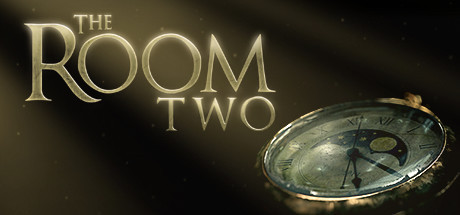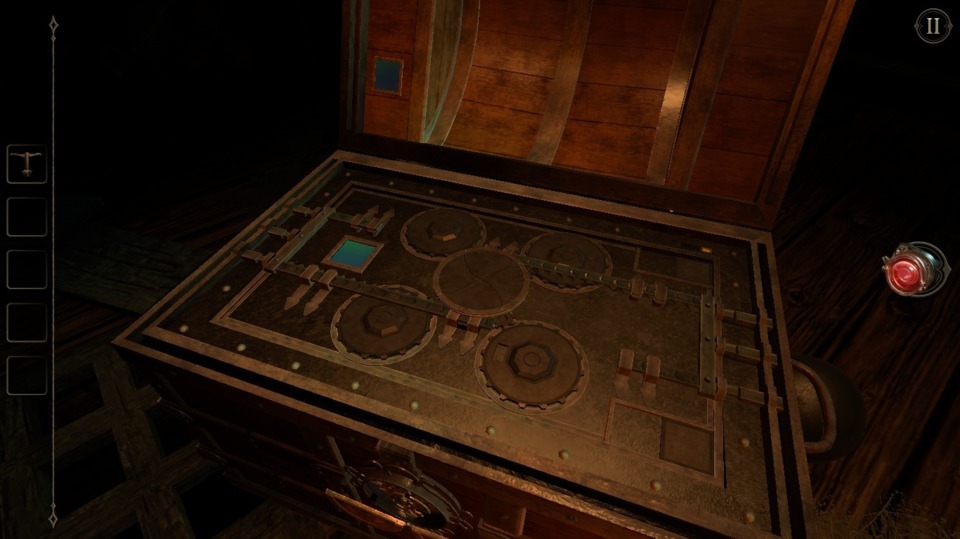Indie Game of the Week 27: The Room Two
By Mento 3 Comments

That's right, it's time for Lisa to tear you apart... AGAIN! For real, Fireproof's The Room was an excellent environmental puzzle game that relied largely on levers, switches, sliding panels, hidden compartments, intricate mechanisms and the occasional use of an occultist looking-glass that revealed messages that would usually prove vital. The Room Two is absolutely more of that, though leans harder into the vaguely Lovecraftian underpinnings to justify how each of the game's "rooms" could be so different: by finding the "glyph", the player would open a door in space/time that sends them to all kinds of unusual but thematically-apropos locales. The first real level after the tutorial, for example, is in the bowels of a privateer's galleon with a model ship and compass platform to poke around in. With each location now divorced from the singular dusty Victorian manse of the original game, the developers are free to create rooms that feature specific puzzles germane to the setting, and it makes for a bit more variation. Variation, incidentally, is what this series clearly needed to consider for its sequel given how similar it is in every other respect.
But you know, not every game sequel has to break the mold, especially if there's still a lot of life and culture in that mold yet. The Room Two still packs a lot of thought into its individual puzzles, even if it can rely too frequently on examining peripheral elements of the room - a pillar behind a chest, for example - in order to make progress. The game has a hint system that won't penalize you in any way (there's no losing an achievement because you got stuck once) but is limited to a couple of clues per spot in the game. Usually it's enough, as the puzzles themselves are rarely so layered and complex individually that they require a mess of hints to walk you through them. Personally, what often happened was I had just missed a camouflaged slider switch or eyepiece clue somewhere.

I suppose the biggest issue with The Room Two (and The Room for that matter) is that it isn't all that challenging if you have a decent enough level of perception - and if you don't, the puzzles are probably going to be more annoying than challenging. Getting stuck because the game just threw a whopper of a brain-scrambler at you is one thing; you can sit back and furrow your brow, but ultimately nod in approval that the developers have outsmarted you. When you're stuck because you didn't see the hatch for a tiny panel on the side of the box you've been staring into, that's going to elicit less of a begrudging appreciation and more of an irritated "oh, huh". Of course, your mileage may vary with this. There's something to be said for being able to carefully conceal objects from your gaze too. Millions of sold copies of Where's Waldo books can't be wrong, after all. (And in case this read as sarcasm, I really want to try that conceptually-similar Hidden Folks game on Steam. I blew all my self-imposed Steam sale budget this Summer before I could sweep it up, but it's something I hope to present in one of these IGotW features in due time.)
As before with The Room, the core appeal of The Room Two isn't so much cerebral but visceral. Feeling buttons and panels click into place to see something activate somewhere else in the level provides a purely Skinner Box-like satisfaction as the sounds and visual cues of century-old devices reveal their secrets. It's more rewarding when you're able to figure out what to do next yourself, of course, but there are definitely tougher and more noodle-scratching puzzle games out there (Snakebird and Toki Tori 2 comes to mind) if that kind of reward cycle is more your jam. What the Room Two manages to do, which is rare and precious, is make you feel smart even when you're not. Just flipping a switch and watching the camera dramatically pan around to show a new compartment has opened up with a rising musical cue makes you feel like you've just discovered Tutankhamun's tomb, rather than completed step thirty-seven of an elaborate but linear puzzle box. That makes it a great puzzle game for idiots, and I can only suppose that intelligent people will get something out of it too.
Rating: 4 out of 5.
| < Back to 26: Wuppo | > Forward to 28: Salt and Sanctuary |
